Abstract
Since 1968, kala-azar has been occurring sporadically in Meiyaogou, Turfan County, Xinjiang-Uygur Autonomous Region, where four species of sandflies are known to exist. The present study of sandflies collected in this area from May to August 1983 shows that Phlebotomus alexandri is the only anthropophilic and predominant species, accounting for 81.1% (7716/8843) of the sandfly population. After having been fed on cotton rats or hamsters infected with Leishmania donovani, 93.9% (230/245) of P. alexandri were infected, the promastigotes not only developing in the stomach but also invading the pharynx, buccal cavity and proboscis. Of the 643 female P. alexandri collected in the wild and in house, 13 (2.0%) were found to be naturally infected, with a distribution of promastigotes similar to that in the experimental infection. All the Chinese hamsters and golden hamsters that had been inoculated with 7 isolates of promastigotes from naturally infected sandflies developed visceral leishmaniasis. In addition, golden hamsters could be infected experimentally by the bite of P. alexandri which had an infection of promastigotes of L. donovani. This is the first demonstration of a species of Paraphlebotomus playing a role in the transmission of kala-azar in the Old World; studies for confirmation by biochemical identification of parasite isolates from naturally infected P. alexandri are now in progress.
Full text
PDF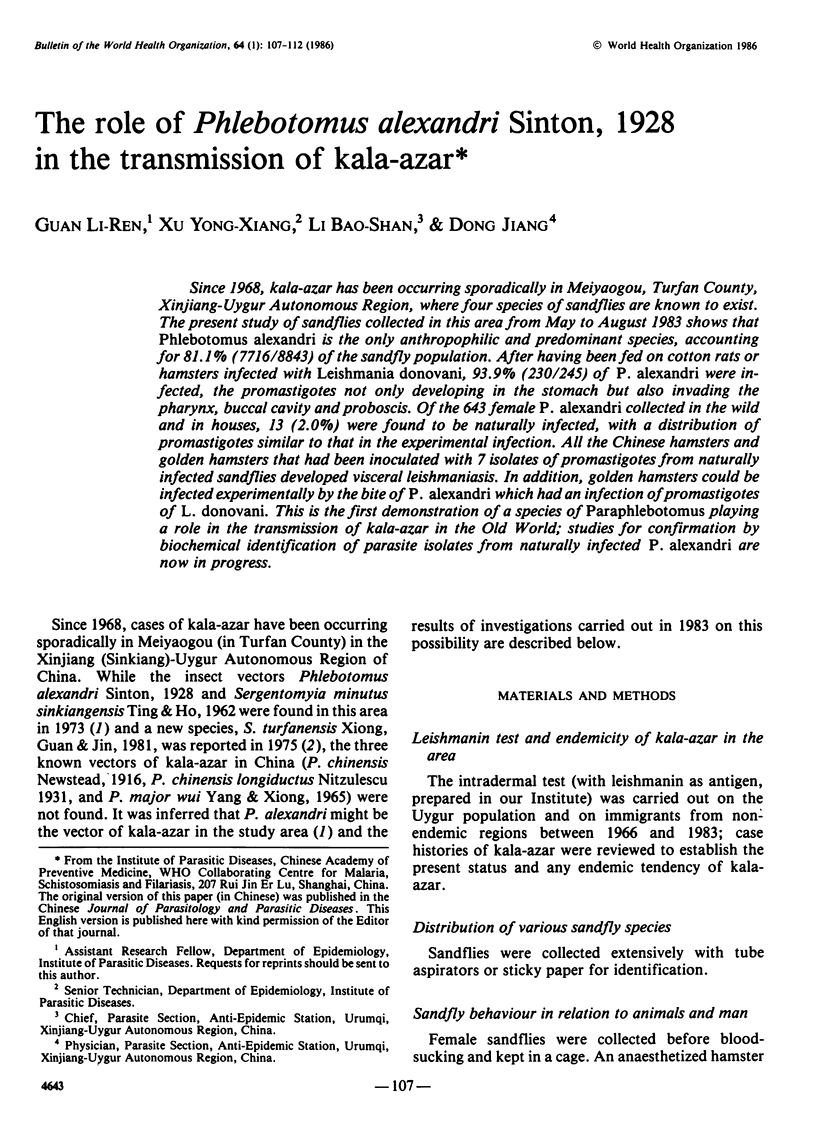
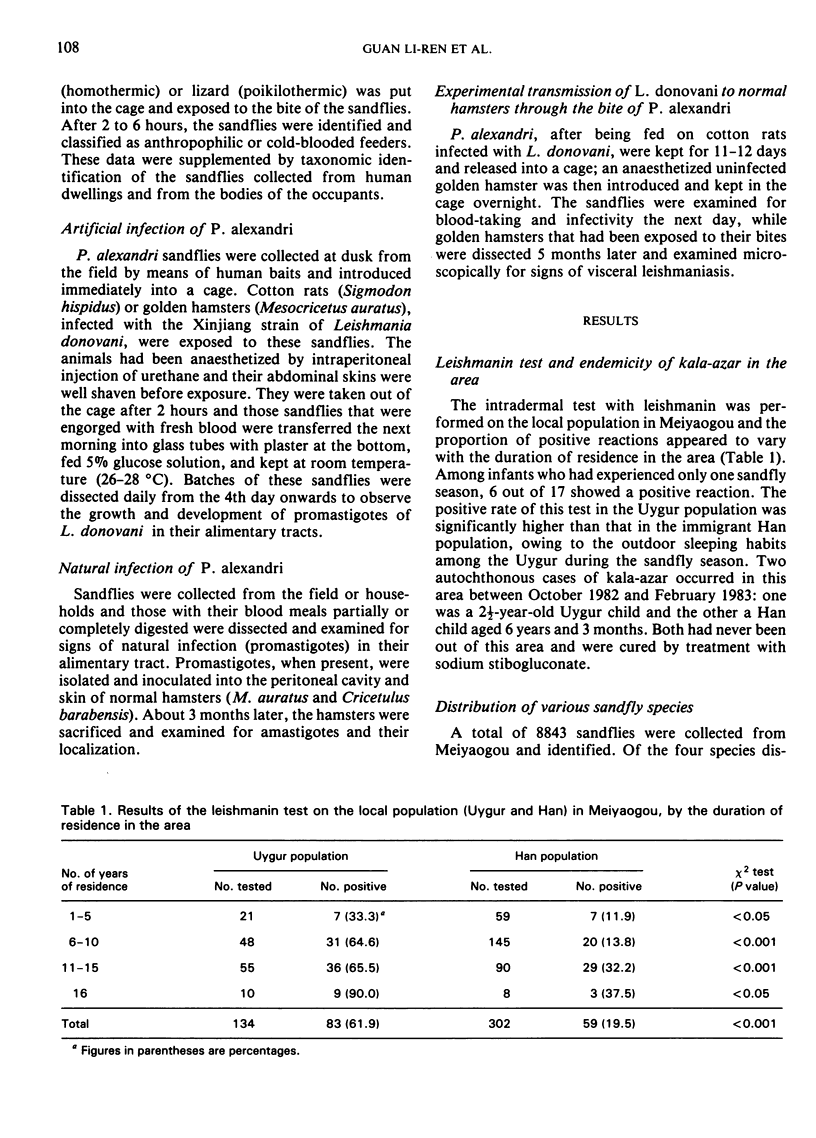
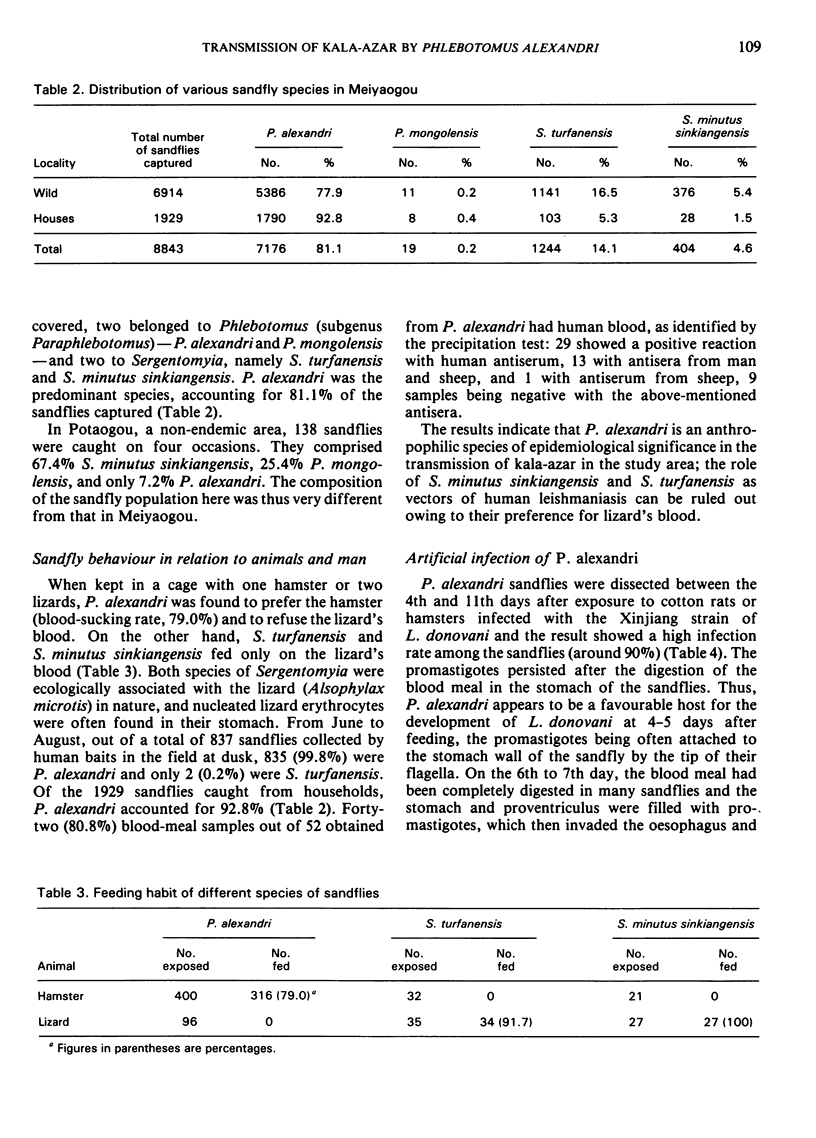
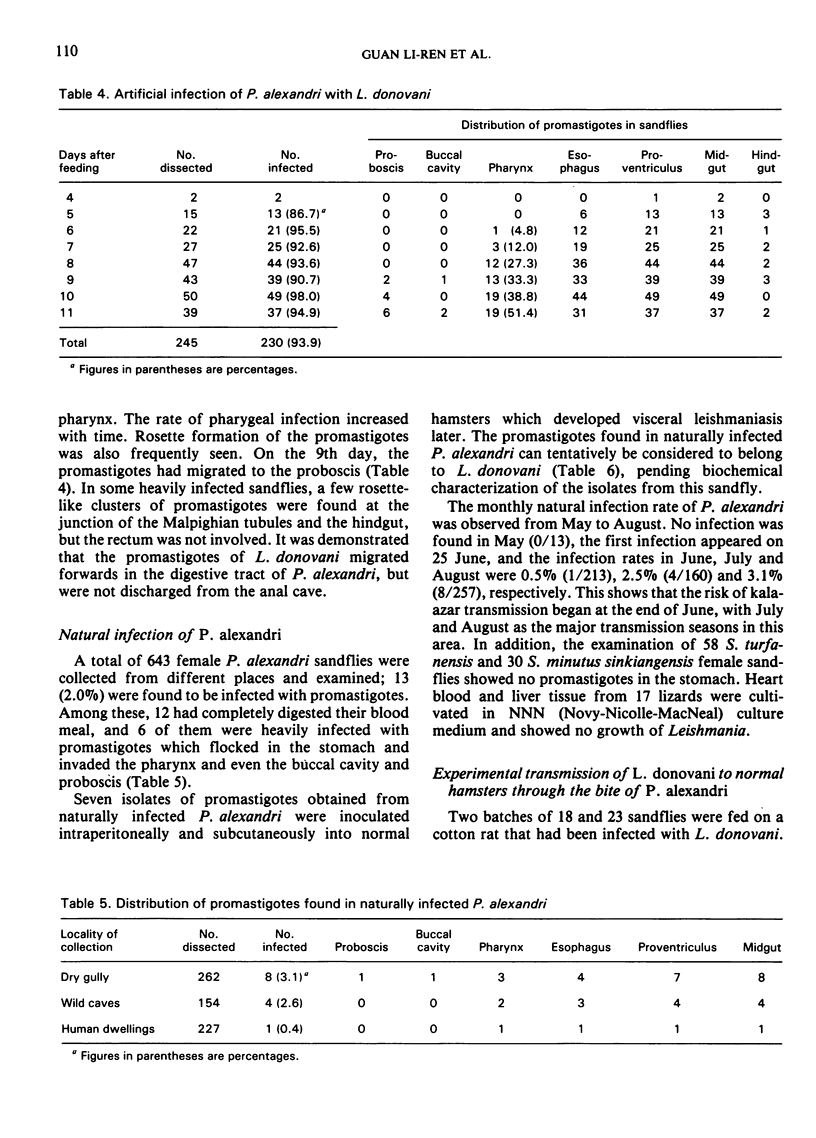
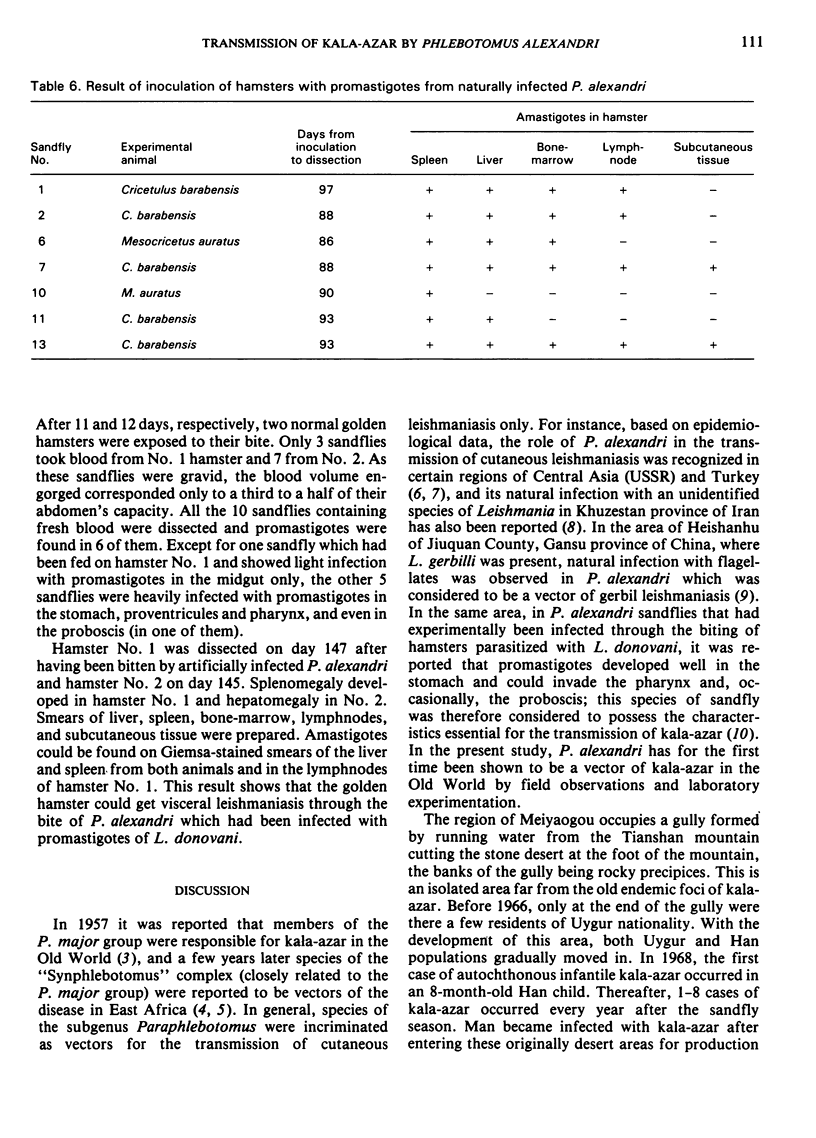
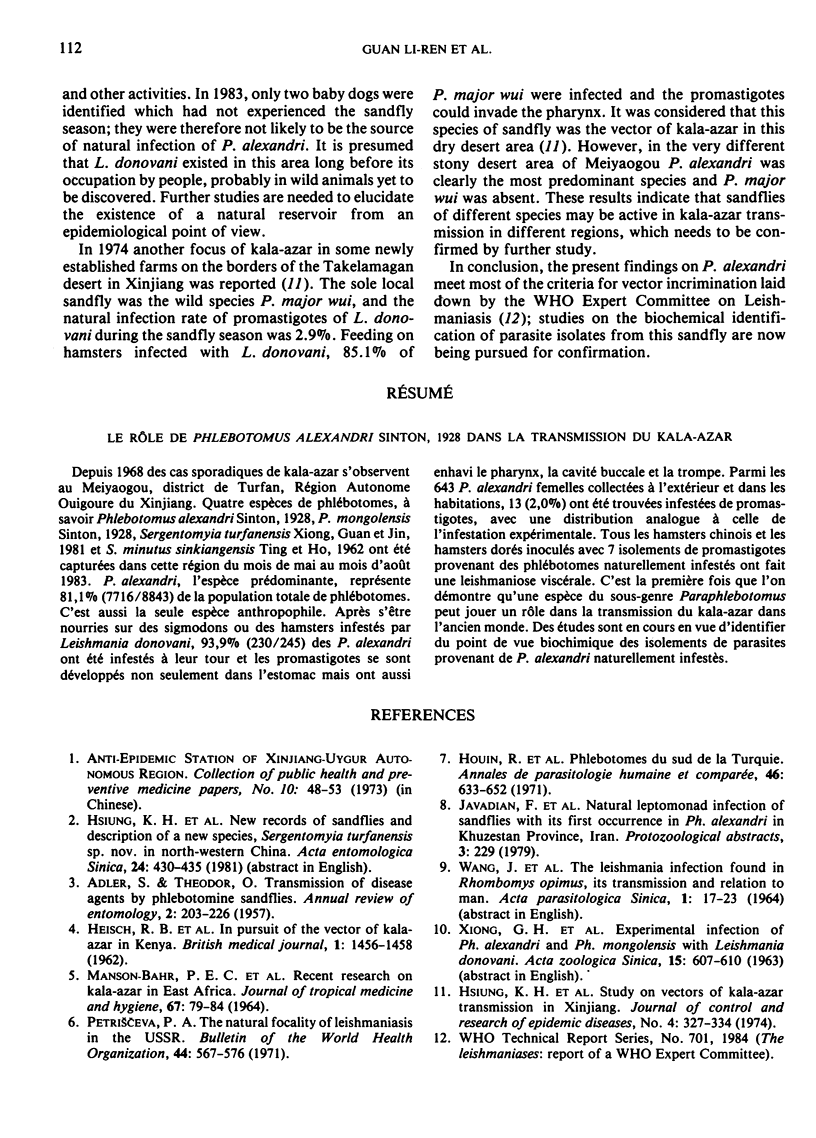
Selected References
These references are in PubMed. This may not be the complete list of references from this article.
- HEISCH R. B., WIJERS D. J., MINTER D. M. In pursuit of the vector of kala-azar in Kenya. Br Med J. 1962 May 26;1(5290):1456–1458. doi: 10.1136/bmj.1.5290.1456. [DOI] [PMC free article] [PubMed] [Google Scholar]
- MANSON-BAHR P. E., SOUTHGATE B. A. RECENT RESEARCH ON KALA AZAR IN EAST AFRICA. J Trop Med Hyg. 1964 Apr;67:79–84. [PubMed] [Google Scholar]
- Petrisceva P. A. The natural focality of leishmaniasis in the USSR. Bull World Health Organ. 1971;44(4):567–576. [PMC free article] [PubMed] [Google Scholar]


